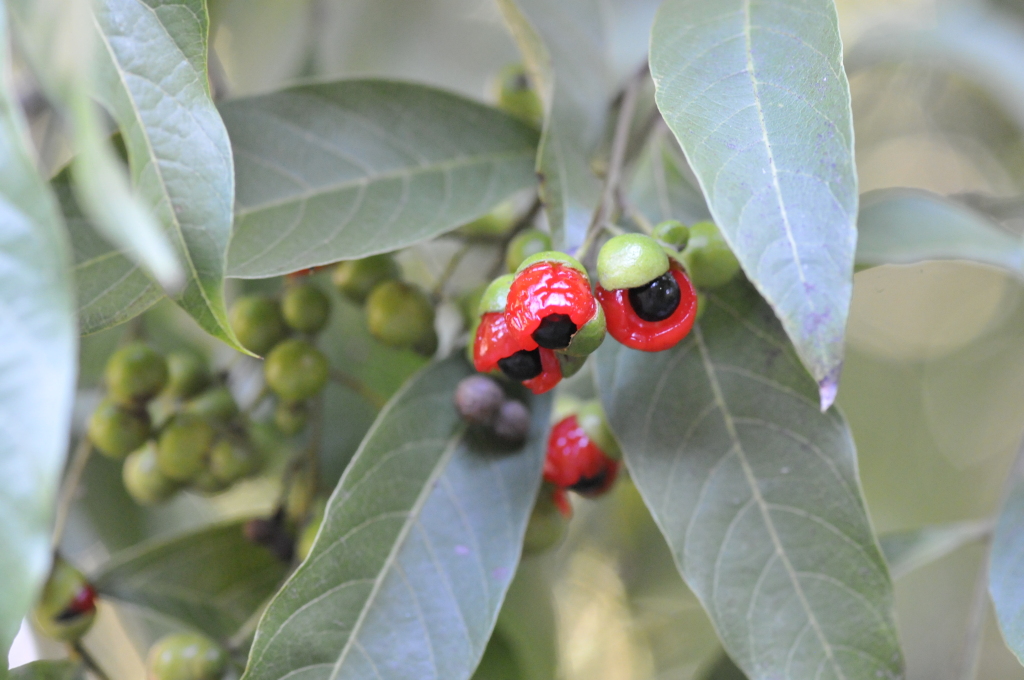Alectryon
Monoecious shrubs or small trees; indumentum of simple hairs. Leaves simple or paripinnate; leaflets alternate or opposite (not in Victoria). Inflorescences axillary, solitary or in small clusters, mostly thrysoid, paniculate, raceme-like, or spike-like, sometimes a single flower. Bracts minute. Flowers small, regular, unisexual or bisexual, subsessile or pedicellate; calyx shortly cupular or saucer-shaped, 4–10-lobed or -toothed, or truncate; petals 0, 4 or 5 and minute, or as large or larger than the sepals (not in Victoria), broadly ovate, shortly clawed; scales reflexed, broad, bilobed, hairy, crestless; stamens 5–12, rarely more, exserted, filaments filiform, usually glabrous, anthers as long or longer than filaments; disc small, annular; ovary 2–4-locular, 1-ovule per locule, style terminal, filiform. Fruit a capsule, mostly sessile, usually 1–4-lobed, pericarp thin or thick, splitting irregularly; seeds globose, shiny, black, adnate at base to aril; aril fleshy, granular, cupular, red, half surrounding seed (in Victoria).
About 36 species, from Malesia to Hawaii and New Zealand; 15 species (14 endemic) in Australia.
Duretto, M.F. (1999). Sapindaceae. In: Walsh, N.G.; Entwisle, T.J., Flora of Victoria Vol. 4, Cornaceae to Asteraceae, pp. 139–149. Inkata Press, Melbourne.
 Spinning
Spinning



